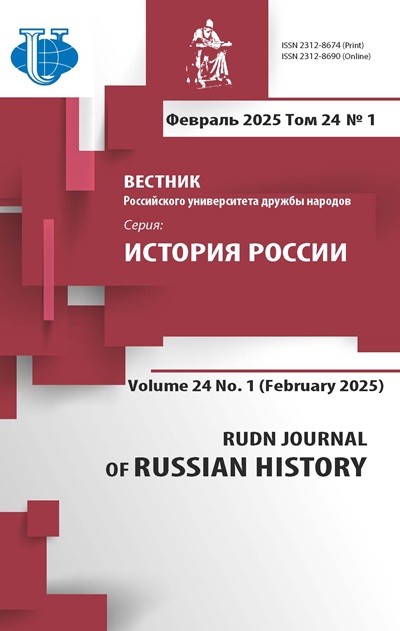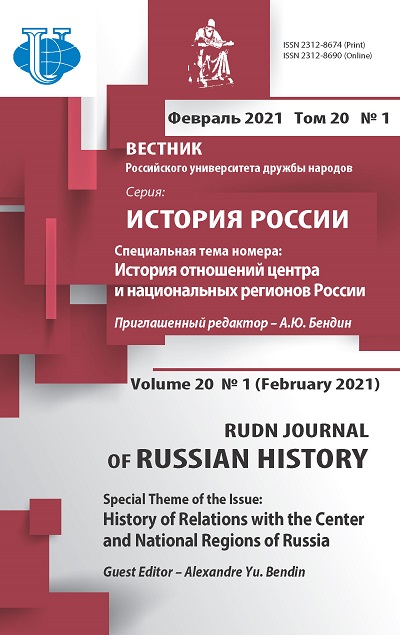Abstract
Based on an analysis of archival documents and periodical press materials, the present paper studies the impact of the liberal reforms of Alexander II on the policies of the imperial authorities for the nomadic peoples of the steppe of Ciscaucasia: the Kalmyks, Nogais and Turkmens. The liberal reforms of the 1860s and 1870s had a direct impact on the formation of the national intelligentsia, which during the revolutionary events of the early 20th century led to the rise of the national movement in the empire’s peripheries and to the struggle for self-determination of the non-Russian populations during the Russian Revolution of 1917. The article reconstructs individual facts and events from the life of the nomadic population under specific socio-economic and political-legal conditions. Using the historical-genetic method, the influence of liberal reforms on the vital activity of the nomadic peoples of the Stavropol province is revealed. The authors focus on the activities of regional authorities during the period under review, which were liberal in nature and carried out in the context of the reforms of Alexander II. The authors conclude that the pre-Caucasus steppe, the territory of the nomadic Kalmyks, Nogais and Turkmens, being the national edge of the Russian Empire and falling under a special system of governance related to the ethnic and religious characteristics of the populations, was not drawn into the orbit of liberal reforms. Meanwhile, a number of measures were approved by the regional executive authorities on the ground, of course, first of all, aimed at satisfying the needs of the imperial policy for incorporating the region into the common imperial space, but at the same time improving the lives of the nomadic peoples of the Stavropol province, in particular in the field of education and legal procedures.
















